Eskdale
The Lakeland valley of Eskdale is twelve miles long and its scenery diverse. A valley of subtle contrasts, its western side is gentle and rolling, but it grows steadily more dramatic and mountainous to the east, culminating in the rugged grandeur of the Hard Knott Pass.
The Eskdale Valley, looking towards the Irish Sea, image courtesy of Graeme Wishart
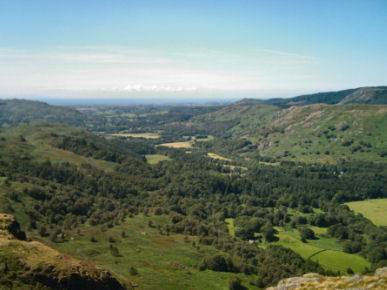
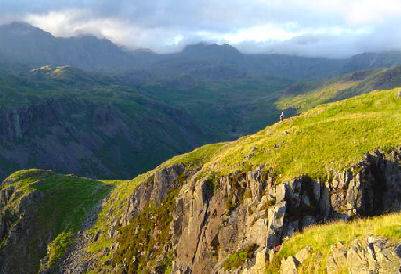
The hamlet of Eskdale Green, a stopping point on the Ravenglass and Eskdale Railway, provides an excellent base for exploring the valley. The village has a number of guest houses, an inn, St. Bega's church, a post office and village shop. Eskdale Green is home to two Lake District centres owned by the Outward Bound Trust, which focuses on sports such as rock-climbing, canoeing and orienteering. There are prehistoric cairns on the fells surrounding the village.
Nearby lies austere Devoke Water, the largest tarn in the Lake District, a bleak but quiet and unspoiled spot, set in wild moorland, it is famous for its red trout and can be accessed by the road for Ulpha from Eskdale Green and onto Birker Fell, from which there are superb views of Scafell
Left -The village of Boot Right - Spring lambs
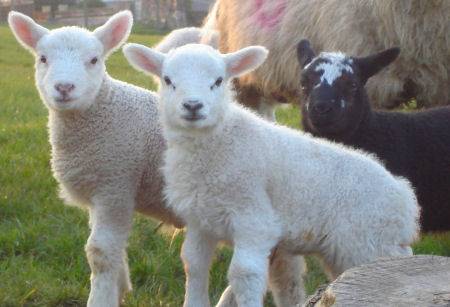
The River Esk, which emerges from the ground at Esk Hause, is considered by many to be the finest river in the region. Esk Hause Pass at 2,490 ' above sea level is the highest pass in the Lake District.
Further up the valley stands the curiously named ancient hamlet of Boot, a white oasis lying amidst dark crags, is mentioned in the Domesday Book. The village now consists of a few pretty stone cottages, a general store, and a small art gallery, which cluster around the Woolpack Inn. The Eskdale Mill in the village was restored in 1975, it dates from at least 1578 and is open to the public. The village grew up with the discovery of iron-ore in the surrounding area. Mining was carried out until the mid twentieth century.
Dalegarth Station near Boot is the eastern terminus for the seven mile long Ravenglass-Eskdale Railway, a 15" narrow gaugue railway, which is highly popular with tourists. The railway has been described as the most beautiful train journey in England. The station has a a café and shop, along with a run-round loop, turntable and siding for trains.
Left- Dalegarth Station and Right - Looking into Eskdale from Muncaster Bridge
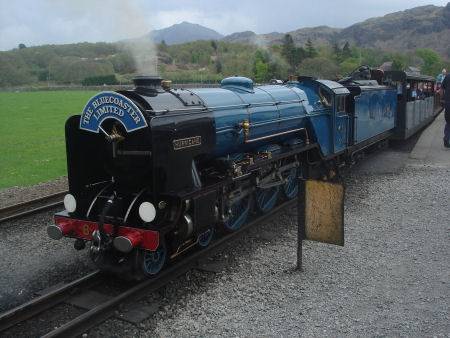
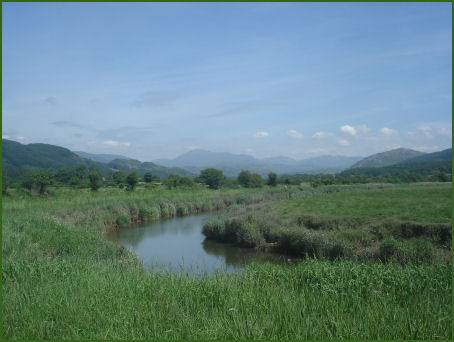
Dramatic Stanley Ghyll force (OS grid ref:- SD 174995) at Boot is a 60 foot high waterfall situated in a deep gorge, rhododendrons grow wild on ledges around the force, reputed to be the most beautiful waterfall in the Lake District.
Image 3 courtesy of John Campbell
A walk through Dalegarth to Stanley Ghyll Force
Length of walk- 1 mile 1.6km.
Ascent - 260 feet 80m
Duration - Approx 1 hour
*Beginning at the Trough House Bridge car park, follow the lane up toward Dalegarth Hall . Turn left through a gate and continue until another gate is reached in the wall on the left.
*Follow the sign posts to Stanley Ghyll and Birker fell, joining the network of paths which lead to the waterfall. When reaching a junction, turn right to eventually join the ghyll. Cross a series of three wooden footbridges, then climb the rock steps to view the waterfall.
*Retracing your steps along the footbridge, take the path leading off to the left, ascending a further series of rock steps. Where the path levels out and comes to a junction, turn left and cross a small stone slab bridge over the beck. Climb the series of wooden steps, where you will encounter a magnificent view into the ravine.
*Follow the footpath alongside the railings to a stile, continue along the path to cross a wooden footbridge above the falls. Follow the route to the opposite viewing platform.
*Return to the stile and follow the indistinct path across the fell to rejoin the path to Dalegarth car park.
Eskdale Self Catering Cottages.
